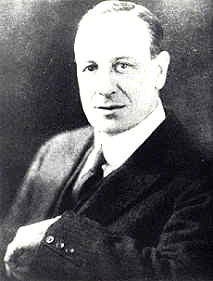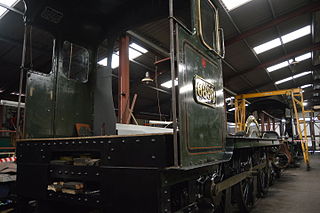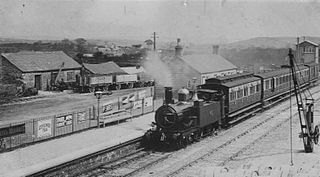| Number | Name | Built | 4-2-2 rebuild | Withdrawn | Details and information |
|---|
| 3001 | Amazon | 01/1892 | 10/1894 | 06/1908 | Previously the name of a Rover Class locomotive withdrawn in 1892; named after a nation of female warriors in Greek mythology. |
| 3002 | Atalanta | 01/1892 | 06/1894 | 09/1908 | Named after a character in Greek mythology |
| 3003 | Avalanche | 02/1892 | 05/1894 | 06/1909 | Previously the name of a Banking Class locomotive withdrawn in 1865 |
| 3004 | Black Prince | 02/1892 | 11/1894 | 10/1911 | Named after the eldest son of Edward III |
| 3005 | Britannia | 02/1892 | 11/1894 | 02/1908 | The Roman name for Britain |
| 3006 | Courier | 03/1892 | 06/1894 | 02/1914 | Previously the name of a Rover Class locomotive withdrawn in 1892 |
| 3007 | Dragon | 03/1892 | 08/1894 | 03/1912 | Previously the name of a Rover Class locomotive withdrawn in 1892 |
| 3008 | Emperor | 03/1892 | 10/1894 | 08/1912 | Previously the name of a Rover Class locomotive withdrawn in 1892 |
| 3009 | Flying Dutchman | 03/1892 | 11/1894 | 08/1912 | Named after the winner of the Epsom Derby in 1849 |
| 3010 | Fire King | 03/1892 | 09/1894 | 09/1908 | Previously the name of a Banking Class locomotive withdrawn in 1875 |
| 3011 | Greyhound | 03/1892 | 01/1894 | 09/1911 | Named after the breed of racing dog |
| 3012 | Great Western | 03/1892 | 06/1894 | 05/1909 | Previously the name of a Rover Class locomotive withdrawn in 1892 |
| 3013 | Great Britain | 03/1892 | 11/1894 | 02/1914 | Previously the name of a Rover Class locomotive withdrawn in 1892 |
| 3014 | Iron Duke | 04/1892 | 10/1894 | 06/1908 | Previously the name of the Iron Duke Class and a locomotive of that class; in this case it was reused from a locomotive of the Rover Class withdrawn in 1892. One of two locomotives of the class named after the Duke of Wellington. |
| 3015 | Kennet | 04/1892 | 08/1894 | 06/1908 | Named after the River Kennet. The locomotive was involved in the Slough rail accident of 1900. |
| 3016 | Lightning | 04/1892 | 11/1894 | 03/1911 | Previously the name of a Rover Class locomotive withdrawn in 1892 |
| 3017 | Prometheus | 04/1892 | 09/1894 | 09/1908 | Originally named Nelson, for Horatio Nelson; renamed May 1895; previously the name of a Rover Class locomotive withdrawn in 1892. Prometheus is a Titan in Greek mythology. |
| 3018 | Glenside | 04/1892 | 08/1894 | 06/1913 | Built as Racer (a term for fast trains from the mid-19th century); renamed September 1911 |
| 3019 | Rover | 04/1892 | 05/1894 | 09/1908 | Previously the name of the Rover class of locomotives, and of an Iron Duke Class locomotive withdrawn in 1871 |
| 3020 | Sultan | 04/1892 | 09/1894 | 02/1908 | Previously the name of a Rover Class locomotive withdrawn in 1892 |
| 3021 | Wigmore Castle | 04/1892 | 03/1894 | 05/1909 | Built to broad gauge. Involved in an accident in Box Tunnel in 1893. Named after a ruined castle in Herefordshire |
| 3022 | Bessemer | 05/1892 | 07/1894 | 02/1909 | Built to broad gauge and originally named Rougemont (previously the name of an Iron Duke Class locomotive withdrawn in 1879). Renamed in 1898, after Henry Bessemer, who invented the first process for mass-producing steel. |
| 3023 | Swallow | 07/1891 | 09/1894 | 09/1912 | Built to broad gauge; previously the name of an Iron Duke Class locomotive withdrawn in 1871 |
| 3024 | Storm King | 07/1891 | 12/1894 | 02/1909 | Built to broad gauge. |
| 3025 | Quicksilver | 08/1891 | 10/1894 | 09/1908 | Built to broad gauge and named St. George . Renamed May 1907, after the element mercury; previously the name of a Saint Class locomotive, which was itself renamed The Abbott 03/1907. |
| 3026 | Tornado | 08/1891 | 06/1894 | 02/1909 | Built to broad gauge; previously the name of a Rover Class locomotive withdrawn in 1892. |
| 3027 | Worcester | 08/1891 | 11/1894 | 07/1914 | Built to broad gauge and originally named Thames; renamed December 1895. |
| 3028 | Wellington | 08/1891 | 07/1894 | 02/1909 | Built to broad gauge. Previously the name of an Ariadne Class locomotive withdrawn in 1873. One of two locomotives in the class named after Arthur Wellesley, 1st Duke of Wellington. |
| 3029 | White Horse | 11/1891 | 07/1894 | 05/1909 | During the first half of the 19th Century the West Country saw several hill figures carved by garrisoned troops, often in the form of a white horse; these were inspired by the original Uffington White Horse in the Vale of the White Horse, in Berkshire (Oxfordshire since 1974). |
| 3030 | Westward Ho | 12/1891 | 10/1894 | 05/1909 | Named after a brand of tobacco produced by W.D. & H.O. Wills. The workers on the gauge conversion in 1892 were issued with 2 ounces (57 g) each. |
| 3031 | Achilles | 03/1894 | | 07/1912 | Namesake of its class of locomotives; previously the name of a Firefly Class locomotive withdrawn in 1867. |
| 3032 | Agamemnon | 07/1894 | | 10/1913 | Agamemnon was a character in Greek mythology; HMS Agamemnon served in both the American Revolutionary War and Napoleonic Wars, and was Nelson's favourite battleship. |
| 3033 | Albatross | 07/1894 | | 07/1911 | |
| 3034 | Behemoth | 07/1894 | | 10/1908 | Previously the name of a Pyracmon Class locomotive withdrawn in 1873 |
| 3035 | Beaufort | 07/1894 | | 05/1909 | Originally named Bellerophon (previously the name of a Premier Class locomotive withdrawn in 1870); renamed December 1895. |
| 3036 | Crusader | 09/1894 | | 03/1911 | |
| 3037 | Corsair | 09/1894 | | 10/1908 | Previously the name of a Bogie Class locomotive withdrawn in 1873; named after the North African pirates. |
| 3038 | Devonia | 09/1894 | | 10/1908 | Named for Devon |
| 3039 | Dreadnought | 09/1894 | | 07/1915 | An allusion to the power of a steam locomotive. |
| 3040 | Empress of India | 09/1894 | | 03/1912 | A title of Queen Victoria |
| 3041 | James Mason | 10/1894 | | 11/1912 | Originally Emlyn ; renamed The Queen 1897 (previously the name of a Prince Class locomotive, withdrawn 1870); renamed James Mason June 1910. |
| 3042 | Frederick Saunders | 10/1894 | | 01/1912 | |
| 3043 | Hercules | 01/1895 | | 12/1913 | Previously the name of a Hercules Class locomotive withdrawn in 1870 |
| 3044 | Hurricane | 01/1895 | | 10/1908 | Named after the horse that won the 1,000 Guineas in 1862 |
| 3045 | Hirondelle | 01/1895 | | 05/1914 | Previously the name of a Rover Class locomotive withdrawn in 1891; French for 'swallow'. |
| 3046 | Lord of the Isles | 01/1895 | | 10/1908 | Previously the name of an Iron Duke Class locomotive withdrawn in 1884. Lord of the Isles is a Scottish title of nobility. |
| 3047 | Lorna Doone | 02/1895 | | 11/1912 | A novel by Richard Doddridge Blackmore set in 17th Century Devon, within the GWR region |
| 3048 | Majestic | 02/1895 | | 06/1913 | Named after HMS Majestic, a battleship launched the month prior to the locomotive's delivery |
| 3049 | Nelson | 02/1895 | | 07/1913 | Originally named Prometheus ; renamed May 1895. Previously the name of an Ariadne Class locomotive withdrawn in 1873. |
| 3050 | Royal Sovereign | 02/1895 | | 12/1915 | Royal Sovereign was a contemporary term for Queen Victoria. This name was temporarily transferred to Atbara Class locomotive no. 3373 when it hauled the Royal Funeral Train from Paddington on 2 February, 1901. |
| 3051 | Stormy Petrel | 02/1895 | | 11/1912 | Named for the storm-petrel |
| 3052 | Sir Walter Raleigh | 03/1895 | | 09/1913 | Named after the Elizabethan nobleman and explorer who was involved in the English settlement of Virginia, and popularized tobacco smoking in Europe |
| 3053 | Sir Francis Drake | 03/1895 | | 09/1911 | Named after the Elizabethan sea captain, navigator and slave-trader, famous for the defeat of the Spanish Armada and the first Englishman to circumnavigate the globe |
| 3054 | Sir Richard Grenville | 03/1895 | | 10/1911 | Named after the Elizabethan privateer and explorer, involved with Raleigh in the settlement of North America, and with Drake's action against the Spanish Armada |
| 3055 | Lambert | 03/1895 | | 02/1914 | Built as Trafalgar (previously the name of an Ariadne Class locomotive withdrawn in 1871); renamed July 1901. Henry Lambert was a captain of the English navy during the Napoleonic Wars. |
| 3056 | Wilkinson | 03/1895 | | 10/1914 | Built as Timour (previously the name of a Rover Class locomotive withdrawn in 1892); renamed July 1901. |
| 3057 | Walter Robinson | 04/1895 | | 09/1912 | Built as Tartar (previously the name of a Rover Class locomotive withdrawn in 1892); renamed July 1901. |
| 3058 | Grierson | 04/1895 | | 02/1912 | Built as Ulysses (previously the name of an Ariadne Class locomotive withdrawn in 1872); renamed May 1895. James Grierson was chief engineer of the GWR; his son William was also a civil engineer on the railway. |
| 3059 | John W. Wilson | 04/1895 | | 06/1913 | Named after John William Wilson, a Worcestershire Liberal Unionist politician. |
| 3060 | John G. Griffiths | 04/1895 | | 03/1915 | Built as Warlock (previously the name of a Rover Class locomotive withdrawn 1892); renamed 03/1908, after a director of the GWR 1908–22; name removed 03/1914. |
| 3061 | George A. Wills | 05/1897 | | 12/1912 | Built as Alexandra ; name removed 11/1910; renamed 10/1911 after George Alfred Wills, a GWR director and chairman of Imperial Tobacco. |
| 3062 | Albert Edward | 05/1897 | | 04/1915 | Named after the first son of Queen Victoria, the Prince of Wales and future King Edward VII |
| 3063 | Duke of York | 06/1897 | | 01/1912 | Named after George Frederick, the grandson of Queen Victoria who would later become King George V. |
| 3064 | Duke of Edinburgh | 06/1897 | | 09/1911 | Named after Alfred, Queen Victoria's second son. |
| 3065 | Duke of Connaught | 07/1897 | | 10/1914 | Named after Arthur, Queen Victoria's third son. |
| 3066 | Duchess of Albany | 12/1897 | | 10/1913 | Named after Helena, the wife of Queen Victoria's youngest son Leopold. |
| 3067 | Duchess of Teck | 12/1897 | | 12/1914 | Named after Queen Victoria's cousin, Princess Mary Adelaide of Cambridge (mother of Mary of Teck, who became Queen Mary as wife of King George V) |
| 3068 | Duke of Cambridge | 01/1898 | | 11/1912 | Named after Queen Victoria's cousin, Prince George, Duke of Cambridge, who was commander-in-chief of the British Army until 1895 |
| 3069 | Earl of Chester | 01/1898 | | 06/1912 | A title given to Albert Edward when he became Prince of Wales. |
| 3070 | Earl of Warwick | 02/1898 | | 10/1914 | Named after Francis Greville, a Conservative politician who served in the House of Commons 1879–92 and the House of Lords until his death in 1924. |
| 3071 | Emlyn | 02/1898 | | 10/1914 | Named after the Emlyn area of South Wales, served by the GWR |
| 3072 | Bulkeley | 06/1898 | | 08/1912 | Built as North Star (previously the name of a Star Class locomotive withdrawn 1871); name removed early 1906; renamed 09/1906 (previously the name of a Sir Watkin Class locomotive withdrawn 1872). |
| 3073 | Princess Royal | 06/1898 | | 10/1912 | Title of Queen Victoria's eldest daughter |
| 3074 | Princess Helena | 06/1898 | | 12/1915 | Named after Queen Victoria's third daughter |
| 3075 | Princess Louise | 07/1898 | | 06/1912 | Named after the eldest daughter of Albert Edward and granddaughter of Queen Victoria |
| 3076 | Princess Beatrice | 02/1899 | | 07/1912 | Named after Queen Victoria's fifth daughter |
| 3077 | Princess May | 02/1899 | | 11/1912 | Named after George Frederick's wife Mary of Teck |
| 3078 | Eupatoria | 02/1899 | | 11/1911 | Previously the name of a Rover Class locomotive withdrawn 1892; the Battle of Eupatoria was fought in the Crimean War |
| 3079 | Thunderbolt | 02/1899 | | 09/1911 | |
| 3080 | Windsor Castle | 03/1899 | | 10/1913 | Named after the residence of the Royal Family, in Berkshire |
|


















